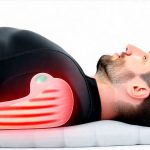The feeling is all too familiar for many: a tightening in the stomach, a wave of nausea, even dizziness, triggered not by illness but by…being surrounded. Whether it’s a packed subway car during rush hour, a small elevator ascending to an unknown floor, or a tightly-packed concert venue pulsing with energy, crowded and confined spaces can induce a surprisingly common form of discomfort. It’s more than just claustrophobia; it’s a complex interplay between physiological responses, psychological factors, and sensory overload that can leave individuals feeling unwell. Understanding the mechanisms behind this phenomenon is the first step toward effectively managing it, and reclaiming control over your well-being in challenging environments.
This isn’t merely about ‘weak stomachs’ or an inability to cope with close proximity. It’s a natural response rooted in our evolutionary history. Our ancestors faced real threats in enclosed spaces – predators lurking, limited escape routes, potential ambush. Even today, these primal instincts can be triggered by situations that feel confining, even if there is no actual danger. This instinct manifests as heightened anxiety, which in turn impacts the autonomic nervous system, leading to physical symptoms like nausea, increased heart rate and shallow breathing. Recognizing this underlying basis helps demystify the experience and fosters a more compassionate self-understanding. For those experiencing chronic discomfort, exploring gut biofeedback may be beneficial.
Understanding the Triggers & Physiological Responses
The core of queasiness in crowded spaces isn’t always about the space itself; it’s often the combination of factors that create an overwhelming sensory experience. Crowded environments are inherently stimulating – visually, aurally, and even olfactorily (smells!). Our brains struggle to process all this information simultaneously, leading to cognitive overload and a sense of being out of control. Confined spaces exacerbate this by limiting our ability to physically escape the stimuli or create personal space. This lack of perceived control is a major contributor to anxiety, which then directly impacts our digestive system.
The physiological response begins with activation of the sympathetic nervous system – often referred to as the “fight-or-flight” response. This leads to:
– Increased heart rate and blood pressure
– Rapid, shallow breathing
– Muscle tension
– A diversion of blood flow away from the digestive system, prioritizing muscles needed for potential escape.
This shift in blood flow can significantly disrupt normal gastrointestinal function, triggering nausea and potentially vomiting. Furthermore, the close proximity to others often introduces a heightened awareness of their bodily functions – breathing, movement, even subtle smells – which can amplify feelings of discomfort and anxiety. It’s important to remember that these are natural responses; your body is simply attempting to protect itself from perceived threat. Understanding gastric emptying can also shed light on digestive sensitivities.
A crucial aspect often overlooked is vestibular dysfunction or sensitivity. The inner ear plays a vital role in balance and spatial orientation. In crowded, moving environments (like buses or trains), the constant motion coupled with limited visual reference points can confuse the vestibular system, leading to dizziness and nausea. Even static confined spaces can trigger this if you feel trapped or unable to move freely. This is why some individuals are particularly susceptible to motion sickness even without actual movement.
Practical Coping Strategies: Immediate Relief
When queasiness strikes in a crowded or confined space, immediate action can help mitigate the symptoms. The goal isn’t necessarily to eliminate the feeling entirely (that might not be possible), but rather to manage it and prevent escalation. Here are some techniques you can employ on the spot:
1. Focus on your breathing: Deep, diaphragmatic breathing – inhaling slowly through the nose and exhaling fully through the mouth – activates the parasympathetic nervous system (“rest and digest”), counteracting the fight-or-flight response. Count to four while inhaling, hold for a moment, then count to six while exhaling. Repeat several times.
2. Anchor yourself visually: Fix your gaze on a stationary object outside of the immediate environment – a distant building, a sign, or even a fixed point within the space itself. This helps stabilize your vestibular system and reduces sensory overload. Avoid focusing on moving objects or people.
3. Mindful grounding techniques: Engage your senses in a calming way. – Feel the texture of your clothing. – Notice the temperature around you. – Listen to the sounds, but try to identify individual components rather than letting them blend into overwhelming noise.
These strategies provide immediate relief by shifting your focus away from internal sensations and toward external anchors. They are about regaining a sense of control over your physiological state. Remember that acknowledging the feeling is okay; resisting it often makes it worse. It’s also helpful to have a small, discrete item with you – a smooth stone, a calming scent (like lavender oil), or even a familiar object – to provide tactile comfort and distraction. Proper breathing techniques are also immensely helpful in these situations.
Long-Term Strategies: Building Resilience
While immediate coping strategies are essential for managing acute episodes of queasiness, building long-term resilience is crucial for minimizing their frequency and severity. This involves addressing the underlying anxieties and sensitivities that contribute to the problem. One effective approach is exposure therapy, which gradually desensitizes you to triggering environments. Start with less crowded spaces and slowly increase exposure over time, focusing on relaxation techniques throughout the process.
Another powerful tool is cognitive behavioral therapy (CBT). CBT helps identify and challenge negative thought patterns that exacerbate anxiety. For example, if you consistently think “I’m going to be sick” in crowded spaces, CBT can help reframe those thoughts into more realistic ones (“This is uncomfortable, but I can cope with it”). This doesn’t eliminate the physical sensations necessarily, but it changes your relationship to them, reducing their power.
Finally, prioritize self-care and stress management techniques in your daily life. Regular exercise, a balanced diet, sufficient sleep, and mindfulness practices all contribute to overall well-being and reduce baseline anxiety levels. A calmer, more resilient nervous system is less likely to be overwhelmed by crowded or confined spaces. Consider incorporating activities that promote relaxation and self-awareness, such as yoga, meditation, or spending time in nature. Support your body’s natural processes with a liver detox.
Proactive Measures: Preparation & Prevention
Prevention is often the best medicine. Before entering a potentially triggering environment, take proactive steps to minimize discomfort. – Plan your route: If possible, choose less crowded transportation options or travel during off-peak hours.
– Hydrate and eat lightly: Avoid heavy meals or sugary snacks before traveling, as these can exacerbate nausea. Stay well-hydrated, but avoid excessive fluids that might lead to needing a restroom in a confined space.
– Dress comfortably: Wear loose-fitting clothing and comfortable shoes.
Consider bringing small items to help you cope: – A portable fan (for airflow) – Noise-canceling headphones or earplugs (to reduce auditory overload) – Ginger chews or peppermint candies (known for their anti-nausea properties – although individual responses vary.) – A small aromatherapy inhaler with calming scents.
Perhaps most importantly, prepare mentally. Visualize yourself successfully navigating the environment and coping with any discomfort that arises. Remind yourself of your coping strategies and trust in your ability to manage the situation. Acknowledging potential challenges beforehand allows you to feel more prepared and less anxious. If you know a particular space consistently triggers your queasiness, consider whether avoiding it is a viable option. There’s no shame in prioritizing your well-being by limiting exposure to environments that significantly impact your comfort level. Understanding meal strategies can also play a significant role.
It’s important to note that if the nausea is severe, persistent, or accompanied by other concerning symptoms (such as dizziness, fainting, chest pain), seeking medical advice is essential. This article offers general strategies for managing mild to moderate discomfort, but it should not be considered a substitute for professional medical evaluation and treatment.


















